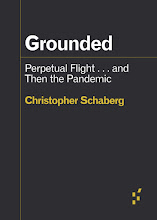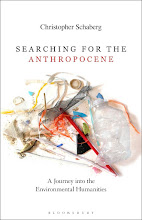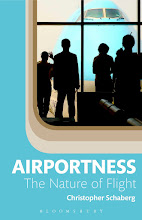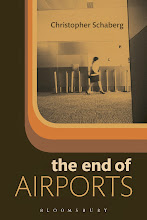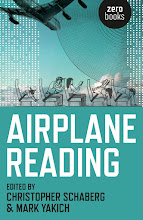Last month I read D.T. Max's biography of David Foster Wallace,
Every Love Story is a Ghost Story, and my review of the book appears on the recently revamped site of the
New Orleans Review.
I enjoy writing book reviews; they are exercises in brevity, while also allowing one to make swift connections across fields and topics that may seem otherwise unrelated. Book reviews are like a way to cover a bunch of topics that are on your mind, funneling them all through a single title.
One of my excellent students is working on his first book review right now (of Krista Comer's super sharp
Surfer Girls in the New World Order), and I'm looking forward to helping him craft the review to submit to
a hip new journal that is open to good writing from across the spectrum of disciplinary expertise and professional status.
Besides that book review and some experimental work on
my sequel airport book, I haven't been writing too much myself, these days; I've been swamped with editing projects, committee work on my campus, and reading through the 200 applications for a single tenure-track position we're searching for in my department. The latter is particularly intense work: you get to see all the brilliant research scholars are doing in a certain field, but you also face the sad state of affairs in our culture, where we are producing multitudes of eager and ready professors for a scant number of actual secure teaching jobs. Let's hope that the academic job market is on an upswing, because there are so many fantastic people who deserve to get good jobs where they can do their research and teach people how to read, think, write, and imagine. I had the thought the other day as I was going through applications that we should convert
retired aircraft carriers into free, floating universities where professors in transition could teach their dream classes for a year or two while on the job market. I haven't figured out the details; I'm just planting a utopian seed.
When I'm in the thick of back-to-back-to-back committee meetings, when I'm in the trenches of grading essays, when I'm reading smart applications for dozens of people we just can't hire, when I'm conjuring up new course ideas and creative assignments, when I'm editing other people's writing and trying to mentally coordinate the overall shape of a book with individual chapters, sections, paragraphs, and sentences—in short, when I get really busy and bogged down in my academic work, I love to be reminded of my writing cabin in northern Michigan, where I go each summer to work, read, play, and plan the next school year. (This is where I first read all of David Foster Wallace, in anticipation of the seminar I taught on his work last year—and which I plan to teach again next year.)

True, it's not really 'my' cabin, and it isn't strictly a 'writing' cabin (we live in it, too, during the summer months)—nevertheless I like to think of it as my writing cabin, and visualizing it helps me get through the times when my hands feel dirty and stuck in the fecund muck that is day-to-day academic life. It is a good life, no doubt, and I really have nothing to complain about. But the truth is that academic life, which sounds like a breeze from outside (You get summers off! You teach just a few days a week!), is actually a totally permeating and immersive experience. As it should be, I suppose.



















